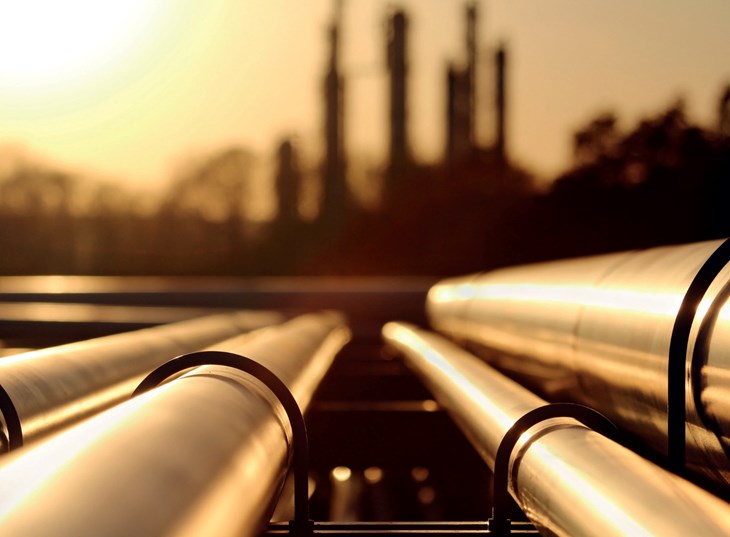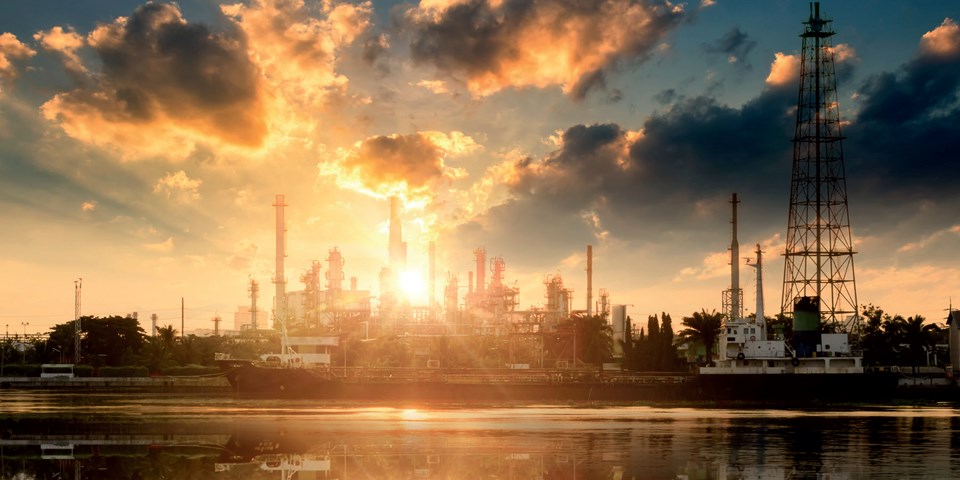By Ivy Davis
Industry Challenges
While the industry is constantly evolving and facing new advancements, the oil and gas sector does face a few challenges. The primary areas of concern are decreasing environmental impact, reducing cost while optimizing performance, and keeping up with demand as the population increases. Today, moving towards cleaner energy, selecting the right valves and actuators, considering size, materials, and maintenance are therefore fundamentally important to the industry.
Climate Change and Cleaner Energy
The first major challenge the entire industry is facing is the dynamic shift towards cleaner energy. With the support of the oil and gas industry, universities, and government, the shift towards renewables is causing a ripple of change that is affecting everyone from large oil and gas companies, to the product and service providers that assist them in moving products through the supply chain. In an effort to address climate change, 12 major energy companies are leading the Oil and Gas Climate Initiative. Companies include: Chevron, Exxon Mobil and Occidental Petroleum, who recently announced a plan to reduce the carbon emissions rate of members’ combined upstream oil and gas operations. This would cut the output by 36 million, to 52 million tonnes per year by 2025. The reduction, the group said, is equivalent to the carbon emissions from the energy use of 4-6 million U.S. homes. 1
With their robust goals comes the support of several organizations, some with financial investment, like the U.S Department of Energy (DOE). On April 8th, 2021, the DOE announced up to $35 million for a new Advanced Research Projects Agency-Energy (ARPA-E) program focused on developing technologies to reduce methane emissions in the oil, gas, and coal industries. This funding opportunity will support projects that can be easily replicated and commercialized quickly to cut methane accumulation in the atmosphere and mitigate the effects of climate change. ARPA-E created the Reducing Emissions of Methane Every Day of the Year (REMEDY) program, to tackle specific methane production targets. “Methane is the second-largest source of greenhouse gases, many times more potent than carbon dioxide—that is why it is crucial we develop solutions to decrease these emissions at their source,” said Secretary of Energy, Jennifer M. Granholm. “The REMEDY program will help us support the Biden Administration’s mission to tackle climate change head-on, create good-paying jobs, and deliver cleaner, fresher air for American communities.” 2
Additionally, the United States Environmental Protection Agency (EPA) launched a webpage called Controlling Air Pollution from the Oil and Natural Gas Industry, to support climate concerns and begin registration for a voluntary methane program. Highlighted on their webpage is their main goal: “EPA’s Clean Air Act regulations for the oil and natural gas industry to help combat climate change and reduce air pollution that harms public health. The regulations apply to equipment and activities used for the onshore oil and natural gas industry.” 3
The oil and gas industry seems to be confident in their goals to reach cleaner energy and with the support of these groups through regulation and funding, it will be possible to continue to reduce environmental impact. While this is an all-encompassing challenge for the industry, it is also important to take note of other challenges in the logistics of moving products such as valves and actuators.
Choosing the Correct Actuators
In the oil, gas, and petrochemical industry, precision control of the flow of product through valves in the system is vital, and modulation of that flow depends on the valve actuator.4 For actuator’s specifically, some challenges include continuing maintenance to ensure reliability, control panels that do not seal or flood in severe weather on coastlines and off-shore rigs, and application errors. Despite that actuation of a valve can alleviate many of the challenges that come with choosing a manual valve, automation can still have its hurdles to overcome.
Application error – Normally, failure is caused by application errors such as: side loading, incorrect wiring, poor mounting fixity, excessive loading, and exceeding duty cycle.5
Quality installation and testing – If an actuator is installed incorrectly or the limits are not set properly, then there will be issues from the start. A poorly installed actuator will require reinstallation if the incorrect specifications cause risks.
Weather – Beyond the control of any operator is Mother Nature. Actuators that are installed on offshore rigs or near the coastline run the risk of having a flooded control panel. Even if properly sealed, the storm force winds and rains will inevitably cause damage and companies will need to prepare to repair control panels or at minimum perform maintenance.
Continued maintenance to ensure reliability – If actuators are not maintained and are neglected, the risk is much higher that they will fail. This will be especially critical with emergency shut-down valves. Maintenance plans are offered to ensure regular maintenance is prioritized.

Choosing the Correct Valves
Choosing the correct valve for each application is necessary to reduce risks and ensure you get the most out of the valve. The challenge does not just come with installing the right valve the first time, but maintaining the valve to reduce fugitive emissions and ensure product is flowing properly. Afterall, excess fugitive emissions can lead to fines and irregular flow can lead to lost product, both affecting the bottom line profits and the environment. There are four main components to consider.
Valve Sizing – A valve improperly sized for the application can cause operating problems within the valve or elsewhere in the fluid transfer system. For example, an undersized valve can choke flow downstream and create upstream back pressure. Highly oversized flow control valves only regulate flow over a limited range near the closed position.6
Media Type – The product that will flow through the valve will determine what type of material the valve is made of. As an example, when monitoring pressurized gases, it is important to use metal valves for the highest level of safety.6
Valve Function – Determine the need that the valve needs to fill. 2-way valves perform well for on/off control in a system, while 3-way valves can be used for diverting or mixing media. Additionally, it is important to take note of whether the valve will be open or closed most often. In order to extend the life expectancy, order a valve that is normally in that orientation and changes to the other direction when energized.6
Maintenance Requirements – Continued maintenance on valves will prevent fugitive emissions and keep the accurate flow of product moving through the lines. Most valves need to be worked on in a live line or a solution provided to solve any immediate concerns while the valve is in a live line.6
Forward Look
Challenges have always been present in this industry and yet, we continue to meet new regulations and achieve robust goals. Oil and gas companies will continue to decrease their carbon emissions, risks, and costs to keep up with demand and expectations.7 With the continued support of the community and organizations, oil and gas will be a collaborative industry that comes together to find solutions for any challenge that is presented. In this resilient industry, there will always be challenges and new goals set. This will give us an opportunity to continue to improve the way we provide energy and continue to achieve great things.

References
1. Major Oil and Gas Companies Set Carbon Intensity. Houston Chronicle, 2020. https://www. houstonchronicle.com/business/energy/article/Majoroil-and-gas-companies-set-carbon-intensity-15412687.
2. DOE Announces $35 Million for Technologies to Reduce Methane Emissions. Energy.gov, 2021. https:// www.energy.gov/articles/doe-announces-35-milliontechnologies-reduce-methane-emissions
3. Controlling Air Pollution from the Oil and Natural Gas Industry. EPA, 2021/ https://www.epa.gov/controllingair-pollution-oil-and-natural-gas-industry
4. Electric Actuators in the Oil and Gas Industry. Valve Magazine, 2019. https://www.valvemagazine.com/magazine/sections/features/10007-electric-actuatorsin-the-oil-and-gas-industry.html
5. What Could Cause Actuators to Prematurely Fail? Thomson Linear. https://www.thomsonlinear.com/en/support/tips/what-could-cause-actuators-toprematurely-fail
6. How to Select the Right Valve for Your Application. Engineering 360, 2017. https://insights.globalspec.com/article/4737/how-to-select-the-right-valve-for-yourapplication
7. Challenges and Trends for the Oil and Gas Industry. Forbes, 2021. https://www.forbes.com/sites/uhenergy/2021/03/10/challenges-and-trends-for-the-oiland-gas-industry/?sh=6d58f466167f
About the Author
Ivy Davis began her career in 2007 with a Bachelors of Business Administration in Marketing from Texas Lutheran University. She was awarded the ‘Outstanding Marketing Award’ for the highest GPA in her graduating class and has since excelled as a marketing professional. Ivy continues to pursue her passion for marketing and regularly consults with organizations to facilitate marketing plans for exponential growth in their industry. She has worked in Houston, Texas for the last decade and focuses predominantly on the oil & gas and technology sectors.


